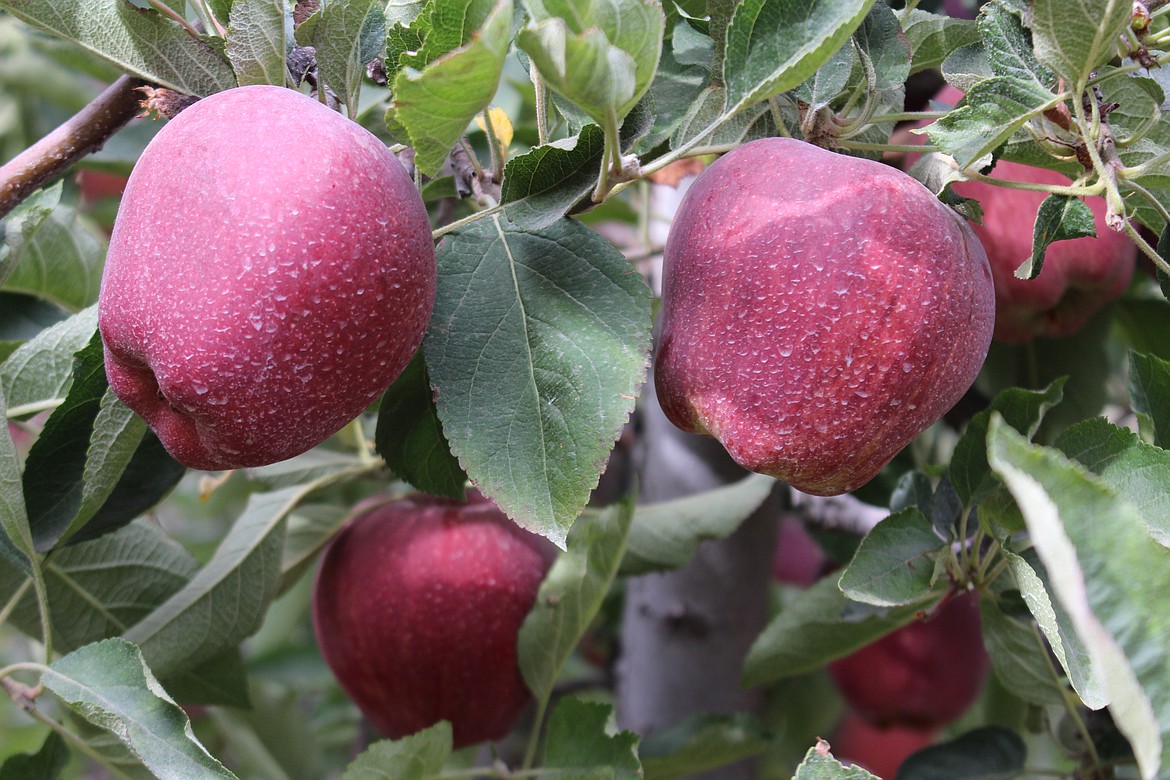Farmers should factor in cost, benefits of crop insurance
OKANOGAN — In a way, farming bears an uncomfortable resemblance to the casinos in Monte Carlo or Las Vegas, minus the glamor of the former and the glitz of the latter.
A freak snowstorm just as cherry blossoms are at their most vulnerable, or a couple of rainy days just as cherries reach maturity. Bitter cold that hits immature wheat without adequate snow cover. A hailstorm that damages apples and pears. A record-breaking heat wave that puts stress on everything growing, from potatoes and onions in the ground to grapes on the vine. Mother Nature can be, um, a witch sometimes. And there are years when markets are not very cooperative either.
Farmers have options to help them alleviate some of those risks. As with any expenditure, however, the benefit must be weighed against the cost. Crop insurance falls into that category.
Rebecca Gebbers, owner of VIP Insurance in Okanogan, said crop insurance provides some protection against bad weather and bad markets.
“Crop insurance is a product that can be purchased that protects the fruit that’s grown or the crop that’s in the ground. We’re not insuring the trees that grow them,” Gebbers said. “We’re literally insuring the produce, (for instance) the cherries that come off the trees. So basically we’re ensuring the future crop and ongoing revenue stream for farmers.
“Sometimes it’s a weather-related event. Sometimes it is just a poor market and returns are down. You delivered a perfect crop of apples, but there’s an oversupply in the market, prices are falling and you lose money even though you did everything right,” Gebbers said.
The insurance is available for almost anything farmers can grow or raise.
“You can buy it on cattle,” she said. “You can buy it on your wheat, and your triticale, and your canola, your corn. There are products available for almost everything out there.”
What the insurance policy will cover depends on the crop, she said.
“It depends on the commodity you’re growing whether or not a revenue guarantee product is available,” Gebbers said. “But more and more there are ways that most of the crops out there can buy themselves a policy that protects the revenue, not just the yield.”
Crop insurance becomes important for lending institutions that finance farm operations, she said.
“That’s become a big thing for bankers, too. Think of all the lenders out there that have all this money they’re giving to the farmers so that they can pay their workers, grow the crops, and harvest. These policies are oftentimes being required by lenders so they know there’s protection for the money that has gone into the crop,” she said.
The benefit it provides means farmers pay for it, sometimes a lot.
“It’s very expensive,” Gebbers said. “And it can get really expensive on some of these high-value crops, like cherries, for example, Because you’re protecting so much potential revenue.”
The U.S. Department of Agriculture is an important part of the crop insurance market.
“There are a couple of different products in crop insurance, but kind of the big one is federal crop insurance,” Gebbers said. “The RMA, which is the risk management agency of the USDA, they administer the program, they set the rules and all the parameters.”
The USDA program is time-sensitive, with specific application periods that are different for each crop.
“Then the government does provide some subsidy toward the premium, so it makes it a little bit more affordable for farmers to purchase,” Gebbers said. “It is an expensive program. It becomes feasible because of the subsidies.”
Private insurance companies also offer policies, she said, sometimes for specific occurrences like hail damage. Those too are expensive, but Gebbers said for farmers it might be part of the cost of doing business.
“It is definitely a business investment. It’s just something you include in your budget,” she said. “So that if you have that one off year – and we hope that growers don’t have many claim years – but if you do, it might be the only thing that keeps you out of bankruptcy or gets your debt paid. Some years are really that severe.
“If you are a guy who’s got a regular day job that pays all the bills, and it will not break you to lose your crop for a year, then you might not spend the money on crop insurance. But just about everyone else, there really is a benefit, even if it’s just buying the catastrophic level (policy), which is very affordable. We’ve had those catastrophic policies pay out in years like we just saw in 2022, when there was no fruit, period, in the orchard.”
Crop insurance is a hedge against loss, and that’s its purpose, Gebbers said.
“Crop insurance is never really intended to put you ahead or to profit you. You’re not going to make money, in most cases, because you got a crop insurance claim,” Gebbers said. “But you will get enough to where you can pay your bills and set yourself up to start fresh for next year. And that’s the goal. We’re not trying to replace the profit you would’ve made. We’re just trying to get you to where you can continue without additional debt.”


